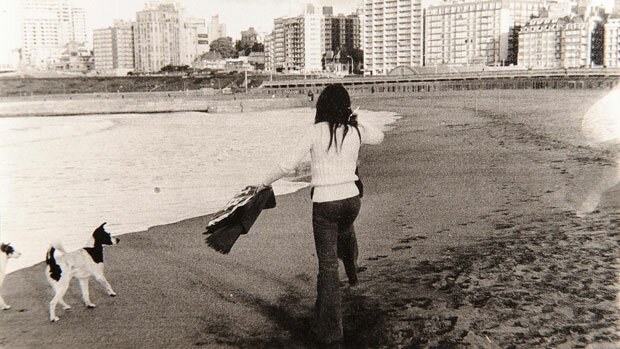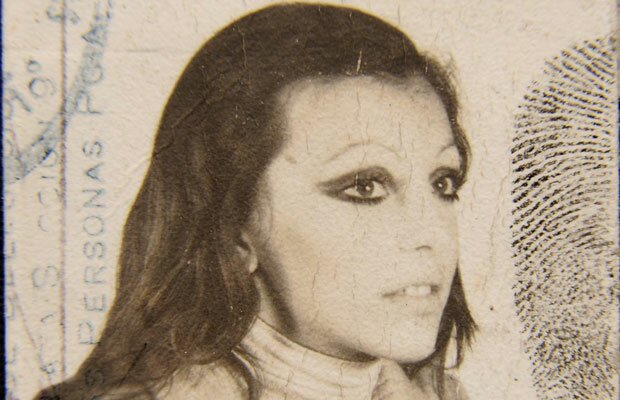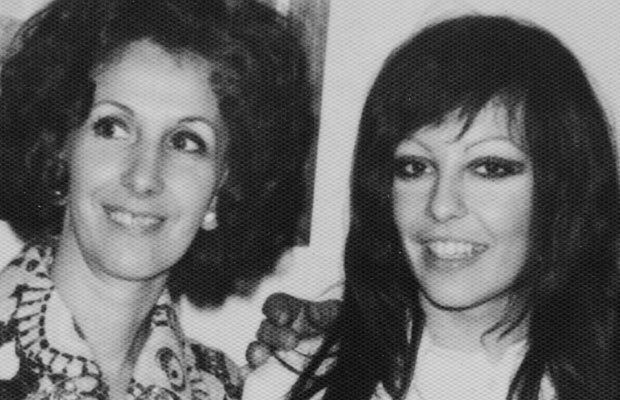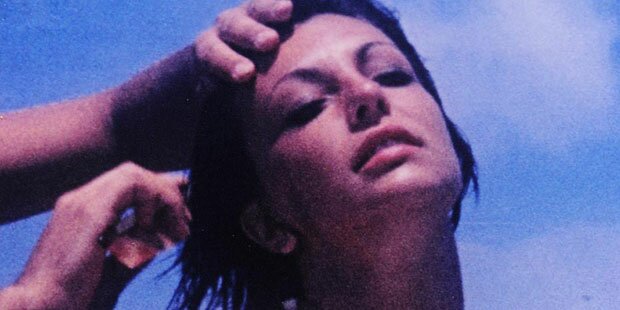Their daughters and sons, young leftist activists from high schools and colleges across Argentina, were tortured and murdered by the military dictatorship of the 1970s, their bodies usually thrown out of airplanes into the Atlantic. The mothers and grandmothers of the Plaza de Mayo stood in silent vigil for decades in memory of their disappeared children. This summer, the original Grandmother of the Plaza found her grandson, stolen from his mother’s arms on the night of her murder, and handed over like hundreds of children of the disappeared to a right-wing family for adoption.
The longest trip of Estela Barnes de Carlotto’s life started that winter afternoon, in August of 1978, with a summons to go to the Isidro Casanova police station. She, her husband and her brother, Laura’s godfather, loaded into their cream-colored van. Hours later, they were in the office of a police chief and they were given Laura’s body, her cranium and abdomen destroyed by bullets. That day, when they told her about her daughter’s death with complete indifference, was the only time Laura’s mother lost her composure.
“What do you mean she passed away? You held her for nine months to kill her!”
Estela continued yelling at them: bastards, cowards, assassins, criminals. But before leaving the office, she took a second to ask the deputy chief of police (a question): “And what happened to the baby?”
She had found out about the pregnancy through someone who had been in captivity over those nine months — a long time — during which the oldest of the Carlotto siblings was missing.
“I don’t know,” the deputy chief of police responded. “I carry out the army’s orders. From the area of operations 114.”
Estela and the Carlotto family’s long trip may have ended yesterday.

Carlotto family archives
On August 5, 2014, just like every other day, Estela got in a car at the door of her home in the Tolosa neighborhood. Since her husband’s death she has lived alone, and did not change her mind after machine gun blasts pierced the front of her home in 2002, nor (did she change her mind) in 2009 when unknown men attacked the police car parked at her door. Since then she has had guards. Yesterday, yet another day in August, nearly 36 years later, her driver took off toward the freeway to drive those 55 kilometers that separate La Plata from the city of Buenos Aires, where the headquarters for the Grandmothers (of the Plaza de Mayo) are. But first she had to take care of an errand at (Judge) Maria Romilda Servini de Cubria’s office.
***
The book I wrote about Laura Carlotto had an open ending, a happy ending. I went around and around while writing the beginning and the end of Laura’s life, as if there were also vital questions at play about Estela’s life in the nuances in the narrative. I’m just realizing now: I started the book with the idea that Estela started the longest trip in her life the day she went, without knowing it, to pick up her daughter’s body. At the end of the book a telephone doesn’t ring, but a doorbell does.
***
At the courthouse, they are processing several cases of children of the desaparecidos, among them Laura’s child. Estela got out of the car, walked with her cane through the ground floor of the building and, alone, entered Servini de Cubria’s office. The judge was waiting for her. She, her secretary and representatives from National Bank of Genetic Data gave her the news in two sentences. “Another male grandchild was recovered,” Estela heard first. And then immediately after: “It’s your grandson.”
Amidst hugs and tears, Estela called her kids on the phone. Remo, the youngest, the government representative, ran to the courthouse to be with his mother, happy and worried because she had gotten the news while she was alone: She is an 83-year-old lady.
Claudia, the second daughter after Laura and (Estela’s) steadfast companion, was still at the house in La Plata when Estela called. She cried. She cried and beyond her emotions there was something she didn’t understand: According to the rules, as the president of the National Commission on the Right to Identity (Conadi), she is habitually the one in charge of giving the news. Amidst her tears she called (her brother) Kibo. From the emotion in her voice, he intuited it right away: “We found Guido, my dear!”, she told him. Kibo is still laughing: His sister had never called him like that in her life.
Thirty seven years ago Claudia was temporarily in exile in Paraguay when she found out her sister Laura was pregnant. At that time, she held the first of her six children in her arms: “When I found out, I hit my head against the bathroom wall, literally,” Claudia remembers,”I said, ‘This couldn’t be worse’. Poor thing. I had my baby girl in my arms and thought, ‘What would I do if they took my baby away?’ My God, to give birth there, and have them take the little thing away. What were they going to do with that baby! It became a reality. My girl was months old. It was horrible. At the time I said: ‘I hope she loses it, so they don’t take it away’. Later I regretted it, but I was thinking about avoiding the suffering, (the suffering) I would have felt if they would have taken my daughter away.”

Carlotto family archives
Yesterday Claudia walked through the Grandmothers’ headquarters — taken over by grandmothers, grandchildren, journalists — celebrating with her siblings, her kids, nephews, nieces and grandchildren, escaping the cameras and waiting on her restored nephew: “It’s a little stressful. He needs time to process all this. We’ve been working on this for years and have been very careful. We still don’t know when the meeting will be.” She was worried: Information had filtered that allowed for him to be identified. He had shown up spontaneously in July at the Grandmothers’ headquarters with suspicions about his origins and had been sent to Conadi. His case did not grab Claudia’s attention: The organization is processing around 8,000 cases. On July 24 he did a DNA test. In general, in these spontaneous appearances, the National Bank of Genetic Data sends a copy of the report to Conadi. But Servini de Cubria’s tribunal had been on the case for years and the Bank sent the information there.
With the news that Laura’s son lives in Olavarria, is 36 years old and is a musician, the Carlottos, besides being overcome with happiness, shrugged off some well hidden fears. The worst, not just for them, was that Estela would leave this world without meeting him. Or that Guido had died from some illness. Or he had been raised in an intractable military family. That’s why yesterday Claudia said: “I’m stunned.” And repeated two words like a mantra: happiness and relief. Guido Montoya Carlotto is a young pianist who had approached Musica por identidad (musicians who work with the Grandmothers to search for children stolen during the dictatorship), whose friends describe online as “caring” and “a good writer”.
Upon learning the results of the DNA test another unknown was revealed: The identity of Guido Ignacio’s father. The Carlottos suspected it was Laura’s last partner, but they never let that be known. Because just yesterday with the results of the DNA test (these suspicions) were confirmed. Walmir Oscar Montoya — El Puno, activist for the leftist Montoneros, 25 years old — was the famous ‘shorty’ or ‘little guy’ that Laura had talked about to Remo, her favorite, or Kibo, her confidante.
Just after Estela called to tell her, Claudia asked the judge to please not say anything directly to (Guido), who had said he preferred to not receive the news in a courthouse. Claudia and Estela met with the Grandmothers. And Claudia, afraid (Guido) would find out from watching television, called Olavarria to say those words that had been stuck in her chest for so long: You are the child of desaparecidos. You are a Carlotto, the grandson of Estela and also my nephew.
“Grandma! Are you going to get the Sunday stew?” One of her fourteen grandchildren hugged her and Estela laughed. They were celebrating once again at the Grandmothers’ headquarters. The room on the second floor where Estela gave the news conference filled up quickly. Most of the people had to be happy with waiting on the stairs where ministers, officials and legislators — Alak, Tomada, Fresneda, among others — had to push body to body to make it up single stair. Others watched the news conference on their phones. On (the street outside the Grandmothers’ headquarters), Virrey Cevallos, the sidewalk was flooded with people. Cars passed honking their horns as if Argentina had won the World Cup. Newsrooms in Argentina hit the pause button. In offices, people left their desks and gathered around television screens. Millions cried in front of their televisions. Estela exuded an extra shine in her eyes and voice, and debuted a larger, more implacable smile.
Juano, (Estela’s) grandson, is also a musician: “It hasn’t sunk in yet. I can’t believe it. I found out at four in the afternoon, like everyone.” Like everyone: Not many news reports carry that much symbolic power. The art of making us feel like we are all wrapped in some kind of shroud of solidarity that shakes and shudders. In the past decade, only the death of Nestor Kirchner united us on a similar emotional caravan, with all its different shades: the feeling that something urgent, remarkable, once-in-a-lifetime was happening, from which there was no turning back, no matter where you stood on it. In Nestor’s case, it was the other side: the sadness, the rage at the end of the question: ‘What would have happened if…?’ The news of Guido, on the other hand, is happiness. There is happiness that waves no flag. The only people who did not celebrate it were the right wing trolls, who every once in a while got up the guts to Tweet that Estela never was a grandmother.
Finding Guido Montoya Carlotto is a story that opens up questions for every discipline. What to do with the hugs and kisses accumulated over 36 years? Why does such a singular case — one of a young kidnapped activist, assassinated, obligated to give birth in shackles, one of a baby ripped from his mother’s arms five hours after being born, who then spent 36 years without knowing who he is — touch and move in such a way that it seems like someone in our own family? Why is it a story that represents so many others stories, that shows only with perseverance and collective organization is it possible to achieve and transform? Why does it teach that sooner than later and without fail, the veil of lies will fall? Why does good triumph over evil despite the sinister pact of silence by the oppressors? (How is that only one of them dared to give information that has led to locating two grandchildren?) Or why is 36 years too long for the director of school who, three days after burying her daughter, got the retirement she had asked for so she could spend all day looking for her grandson? (“Be calm, my daughter. I’m still here looking,” Estela would say to Laura). Why is it that the baby and the mother meet again, 36 years later, in those two faces that a quick glance one notices the similarities: the face of Ignacio or Guido, the nose, the shape of the face and similarities in Estela, the unforgettable eyes of his mother? Why, in the appearance of this grandson, is there also an appearance of his mother? Or does it shake us simply because of that, because it is no more and no less than an appearance?

Carlotto family archives
I am too emotional to continue writing. I have many questions to ask the Carlotto family. To ask Ignacio Guido. After all, telling the story of Laura’s life was Estela’s idea in honor of him. I will keep asking, among so many other questions, why after the Carlottos and various other investigative teams spent years searching, stringing facts together, crosschecking names, operations, jurisdictions of armed forces, how it was that the find came from somewhere else, from a sliver stuck in Ignacio’s biography. But also how much each step along the way helped to reach this happy and also painful ending. Thirty six years is a long time. It could have been longer. It is shorter because of the Grandmothers, and because the people who were locked up with Laura in (the clandestine military prison) La Cacha gave brave testimonies that proved she was pregnant and gave birth, and because of the exhumation by Clyde Snow — the founder of Argentina’s Forensic Anthropologist Team — that showed a baby had dwelled in Laura’s hip bones, and because of the trials (against the military officials) and so many other efforts.
I will also continue asking myself why, to write this rushed text, I again need Laura’s rituals: her picture close by, a poem by (Argentine poet Paco) Urondo and the other secret rituals I invoked while I told her story in my book. I look at her and today her look — looking everywhere and nowhere — seems certain and firm to me, as implacable as Estela’s smile.
And I will continue asking myself while I am alive: How can it be explained that yesterday morning I woke up startled at 4:30 in the morning and couldn’t go back to sleep? A dream had disturbed me. I had dreamt about Estela. It was scene of an appearance in a family: Laura’s mom was laying on a bed. My son entered and left for no reason. And Estela said to me: “I think I’m going to need a cup of tea.”
Maria Eugenia Luduena Translated from Spanish by Brian Hagenbuch for International Boulevard
09 Sep 2014




































